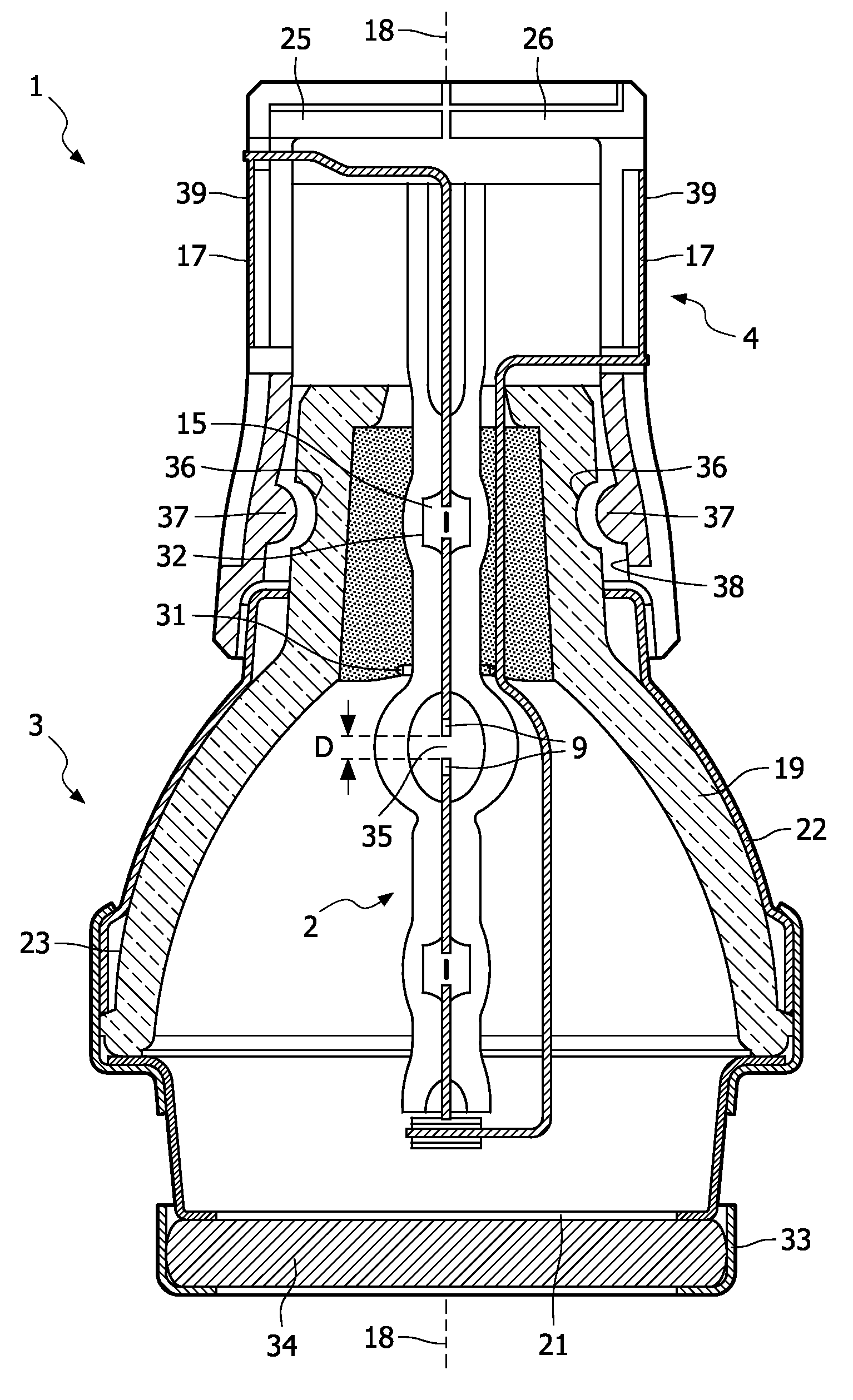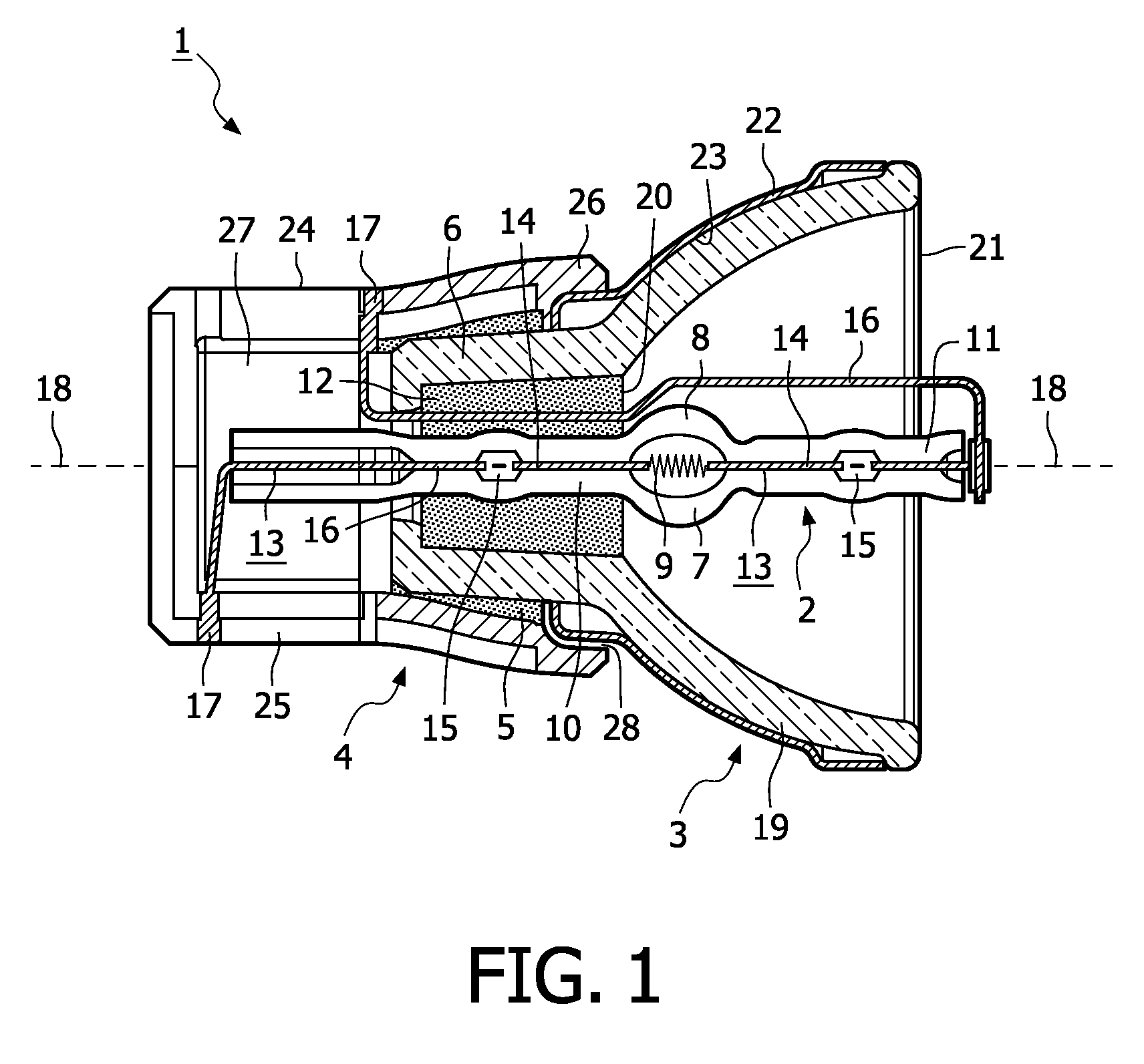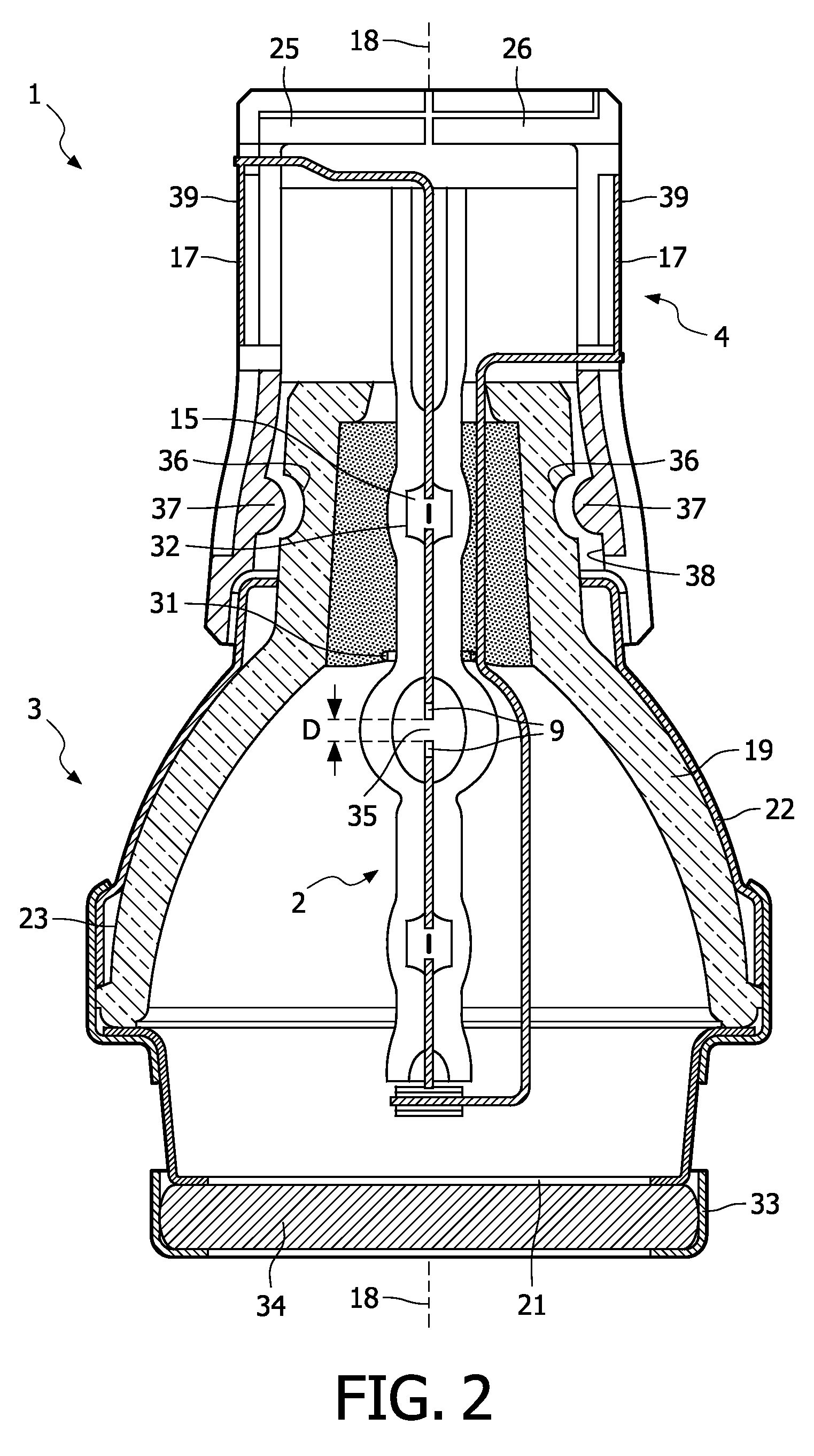Capped lamp/reflector unit
a lamp/reflector unit and cap technology, which is applied in the direction of incadescent envelope/vessel, gas-filled discharge tube, lighting and heating apparatus, etc., can solve the problems of flashover risk between the electrical contacts, relatively unsafe, and complex replacement of the unit, so as to facilitate the operation of the unit and replace the effect of easy operation
- Summary
- Abstract
- Description
- Claims
- Application Information
AI Technical Summary
Benefits of technology
Problems solved by technology
Method used
Image
Examples
first embodiment
[0017]FIG. 1 shows a capped lamp / reflector unit 1 (=unit) according to the invention. The unit comprises a lamp vessel 2 arranged inside a reflector 3 and a lamp cap 4 fixed with cement 5 to a hollow neck-shaped portion 6 of the reflector. The lamp vessel comprises a wall 7 enclosing in a gastight manner a space 8 in which a light-emitting element 9 is arranged. The lamp vessel is double-ended and has a first seal 10 opposite to a second seal 11 as a part of its wall, via which first seal the lamp vessel is fixed with adhesive 12 in the hollow neck-shaped portion, the lamp cap being provided around the neck-shaped portion. The lamp vessel further has electrical current conductors 13 which extend from the light-emitting element through the seals to the exterior. Each current conductor comprises a respective internal current conductor 14, a molybdenum foil 15 and an external current conductor 16. Each external current conductor is electrically connected to a respective electrical cont...
second embodiment
[0020]FIG. 2 shows a capped lamp / reflector unit 1 (=unit) according to the invention. The lamp vessel 2 is double-ended and of the UHP-burner type, which is in general suitable for use in a high-pressure mercury discharge lamp. The lamp vessel has a filling of mercury in an amount of ≧0.15 mg / mm3, leading to a pressure of about 200 bar in the space during operation of the unit, about 100 mbar Argon as a starting gas and a halogen compound, typically bromine in an amount of about ≧1.10-4 μmole / mm3. The light-emitting element 9 is a pair of tungsten electrodes, having a mutual electrode distance D of typically 1.0 mm, and is positioned in a focal point 35 of the (elliptic) reflector. The lamp normally consumes a power in the range of 35 Watt to 500 Watt, in the FIG. 200 Watt. The lamp vessel is further provided with an antenna 31 around the first seal and a UV-enhancer 32, i.e. a seal-cavity around the Mo-foil 15, filled with a constituent also present in the filling of the space, to ...
PUM
 Login to View More
Login to View More Abstract
Description
Claims
Application Information
 Login to View More
Login to View More - R&D
- Intellectual Property
- Life Sciences
- Materials
- Tech Scout
- Unparalleled Data Quality
- Higher Quality Content
- 60% Fewer Hallucinations
Browse by: Latest US Patents, China's latest patents, Technical Efficacy Thesaurus, Application Domain, Technology Topic, Popular Technical Reports.
© 2025 PatSnap. All rights reserved.Legal|Privacy policy|Modern Slavery Act Transparency Statement|Sitemap|About US| Contact US: help@patsnap.com



